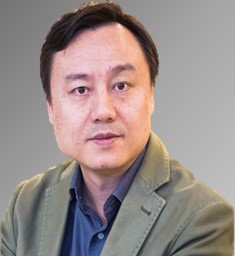来源:新葡的京集团35222vip
发布日期 :2019-10-15 最后更新 :2019-10-15 浏览次数:
报告题目:Controlling Photon Upconversion in Nanostructured Materials: An Expanding Toolbox for Bioimaging and Photonic Applications
报告时间:2019年10月18日 上午09:30
报告地点:新葡的京集团35222vipD912会议室
Xiaogang Liu
Department of Chemistry, National University of Singapore, Singapore 117543, Singapore 117602
E-mail: chmlx@nus.edu.sg
Abstract: Lanthanide-doped nanoparticles exhibit unique luminescent properties, including a large Stokes shift, a sharp bandwidth of emission, high resistance to optical blinking, and photobleaching. Uniquely, they can also convert long-wavelength stimulation into short-wavelength emission. These attributes offer the opportunity to develop alternative luminescent labels to organic fluorophores and quantum dots. In recent years, researchers have taken advantage of spectral-conversion nanocrystals in many important biological applications, such as highly sensitive molecular detection and autofluorescence-free cell imaging. With significant progress made over the past several years, we can now design and fabricate nanoparticles that display tailorable optical properties. In particular, we can generate a wealth of color output under single-wavelength excitation by rational control of different combinations of dopants and dopant concentration. By incorporating a set of lanthanide ions at defined concentrations into different layers of a core-shell structure, we have expanded the emission spectra of the particles to cover almost the entire visible region, a feat barely accessible by conventional bulk phosphors. In this talk, I will highlight recent advances in the broad utility of lanthanide-based nanocrystals for multimodal imaging, bio-detection, display and photonics.
 Xiaogang Liu earned his B.E. degree (1996) in Chemical Engineering from Beijing Technology and Business University, P. R. China. He received his M. S. degree (1999) in Chemistry from East Carolina University under the direction of Prof. John Sibert and completed his PhD (2004) at Northwestern University under the supervision of Prof. Chad Mirkin. He then became a postdoctoral fellow in the group of Prof. Francesco Stellacci at MIT. He joined the faculty of the National University of Singapore in 2006. He holds a joint appointment with the Institute of Materials Research and Engineering, Agency for Science, Technology and Research. Currently, he sits as an Associate Editor for Nanoscale and serves on the editorial boards of Chemistry - An Asian Journal, Advanced Optical Materials, Journal of Luminescence, and Journal of Physical Chemistry Letters. His research encompasses optical nanomaterials and energy transfer and explores the use of luminescent nanocrystals for photocatalysis, sensing and biomedical applications.
Xiaogang Liu earned his B.E. degree (1996) in Chemical Engineering from Beijing Technology and Business University, P. R. China. He received his M. S. degree (1999) in Chemistry from East Carolina University under the direction of Prof. John Sibert and completed his PhD (2004) at Northwestern University under the supervision of Prof. Chad Mirkin. He then became a postdoctoral fellow in the group of Prof. Francesco Stellacci at MIT. He joined the faculty of the National University of Singapore in 2006. He holds a joint appointment with the Institute of Materials Research and Engineering, Agency for Science, Technology and Research. Currently, he sits as an Associate Editor for Nanoscale and serves on the editorial boards of Chemistry - An Asian Journal, Advanced Optical Materials, Journal of Luminescence, and Journal of Physical Chemistry Letters. His research encompasses optical nanomaterials and energy transfer and explores the use of luminescent nanocrystals for photocatalysis, sensing and biomedical applications.
